The Art Detective
The $202 Million Sale of Heidi Horten’s Jewels Was a Massive Success. Its Aftermath Continues to Haunt Christie’s
Critics are unwilling to forget the tainted provenance of Horten's jewelry, or forgive the auction house.
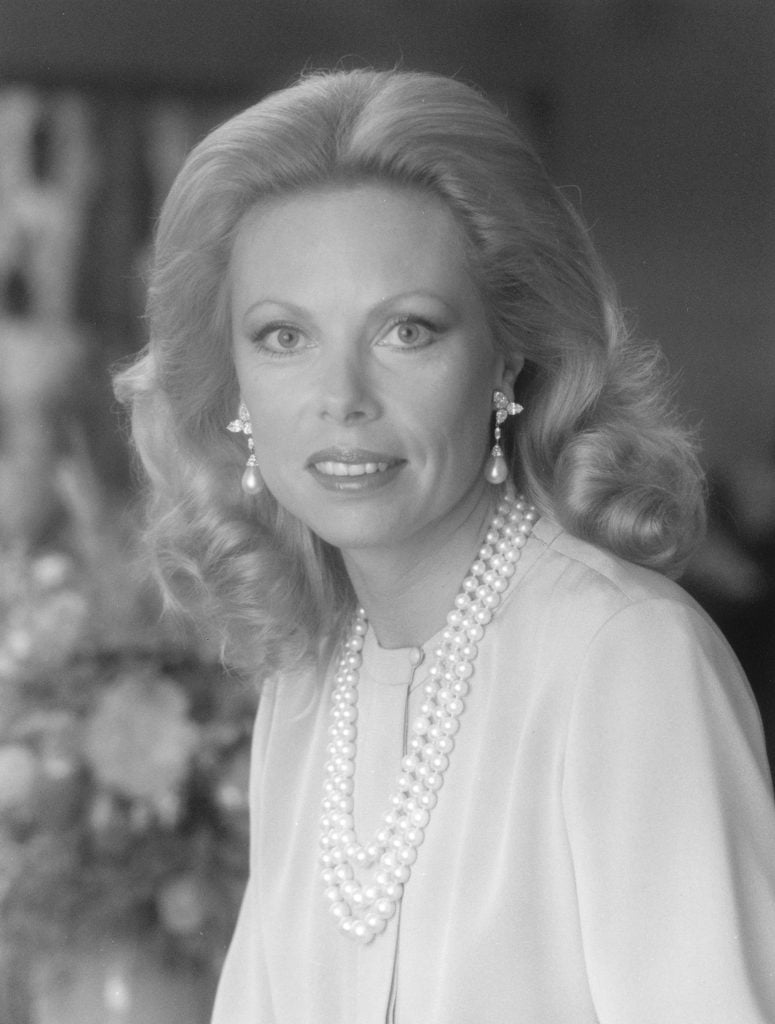
Critics are unwilling to forget the tainted provenance of Horten's jewelry, or forgive the auction house.

Katya Kazakina

It seemed like a dazzling opportunity.
A trove of jewels by Cartier, Bulgari, and Harry Winston, assembled over decades by Austrian billionaire Heidi Horten and now offered for sale at a global auction house.
But there was a wrinkle, a big one: Horten inherited the wealth from her late husband, Helmut Horten, a member of the Nazi Party during World War II, whose fortune was built by snapping up Jewish businesses under duress as part of Hitler’s Aryanization process.
Heidi Horten, a former secretary who met Helmut Horten at a bar in 1959, died last year. Her estate, which includes a foundation with a major art collection, reached out to Christie’s and Sotheby’s to sell the jewels.
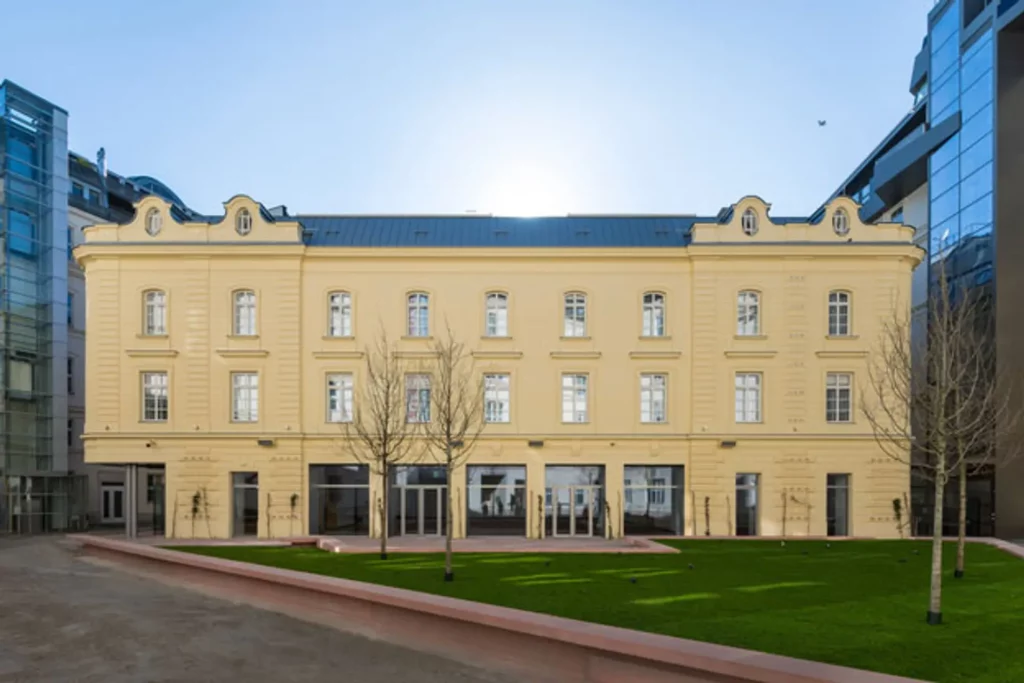
The Heidi Horten Collection museum in Vienna. Photo by Rupert Steiner, ©Heidi Horten Collection.
Auction houses aren’t strangers to complicated provenances. Think: Russian oligarchs, Saudi royals, tax fraudsters, and alleged pedophiles to name a few unpleasant varieties of former owners. But as long as the objects have clear title and weren’t stolen outright they are usually game to sell them, especially if they stand to make millions of dollars along the way. The assumption is that collectors are adults and can decide how to spend their money.
“At auction houses, you don’t veer into the territory of moral relativity,” a former executive told me this week. “What’s the boundary here?”
And so, when the Horten estate beckoned, the auction houses dispatched their best and brightest—from regional representatives and department heads all the way up to CEOs—for the high-stakes pitch with the estate in Vienna in the final months of 2022. It was seen as the Paul Allen moment of the jewelry world. “A collection of this importance would have to have a buy-in from the most senior level, including a moral buy-in,” the former executive said.
Christie’s won, and soon the auction house began cataloguing the collection. The pieces were all purchased after the war, starting in the 1970s, and often at auction. Helmut Horten, who died in 1987, was initially described in Christie’s promotional materials as “a German entrepreneur and philanthropist.” The Nazi roots of his wealth were conveniently overlooked.
In early April, hundreds of the Horten gems went on a monthlong global tour, starting in Hong Kong and hitting stops in New York, London, Vienna, Taipei, Shanghai, Singapore, Taichung, and Dubai ahead of a series of auctions in Geneva in May.
Estimated at $150 million in total, the group’s valuation eclipsed the record-setting troves of Elizabeth Taylor and the Al Thani family. Christie’s promotional materials described it as a “glorious assemblage” of “impeccable quality and breadth, showcasing the art of jewelry in all its splendor.”
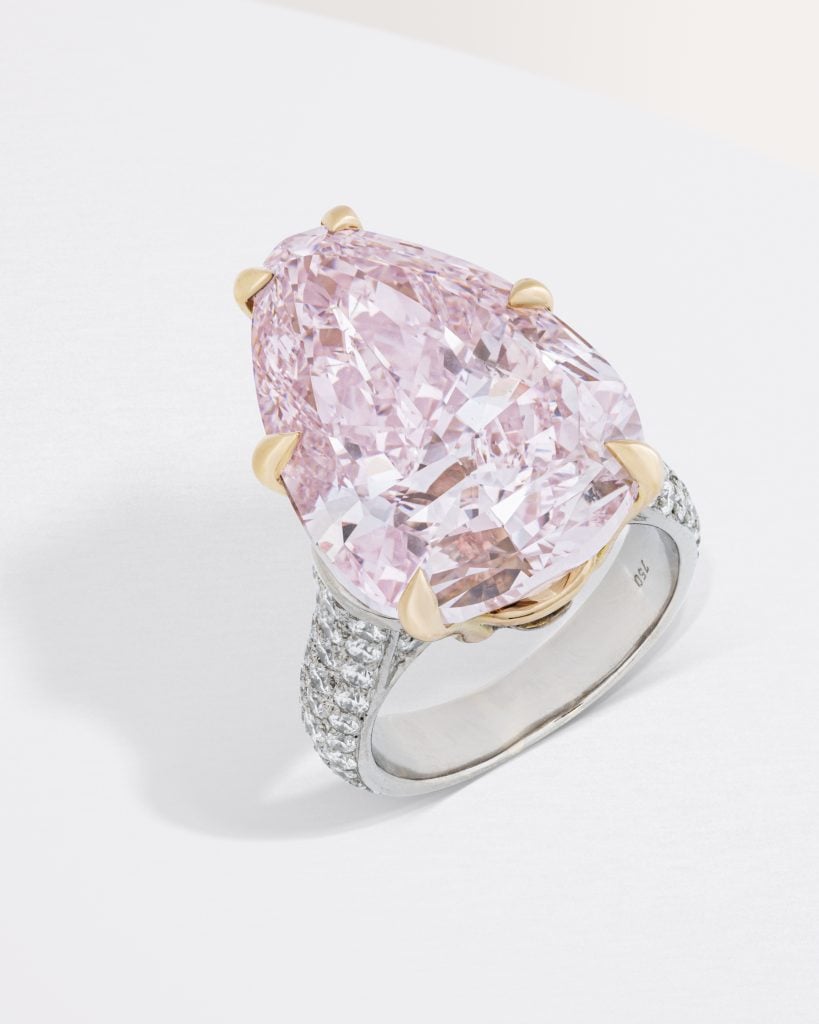
Fancy pink diamond of 20.06 carat from the collection of Heidi Horten. Courtesy: Christie’s
But Christie’s failure to disclose the roots of Horten’s wealth didn’t go unnoticed. Clients like Cathy Lasry, the wife of billionaire Marc Lasry, complained. Holocaust survivors and Jewish organizations decried the consignment as whitewashing and threatened to stage protests. In its defense, Christie’s said it took on the collection, in part, because its proceeds would go to charity. It ended up adding a few sentences about Helmut Horten’s Nazi past.
The furor around the sale did little to dampen the market’s excitement for the rubies and diamonds. The first auctions raked in $202 million, with 98 percent of lots sold. A Cartier ring fetched $15 million, the highest price so far. The second batch of Horten jewels—another 300 lots—are scheduled for sale in November.
“Basically, some Jewish groups were outspoken, but the world didn’t seem to care,” a current auction executive said. “The market doesn’t care.”
It looked like Christie’s managed to get away with it.
And yet, the outrage just won’t go away. Despite the apparent financial success, the sale has turned into a publicity nightmare, the fallout of which continues to reverberate months after the first gavel went down.
This week, the Tel Aviv Museum of Art canceled an event on restitution organized by Christie’s that had been scheduled to take place in December, the grand finale of the auction house’s yearlong program marking the 25th anniversary of the Washington Principles, a watershed moment in the field of restitution.

The main building of the Tel Aviv Museum of Art. Photo: Elad Sarig.
The blowback also presents an optical challenge to Christie’s restitution department, which has been involved in some of the key cases over the years. In 2006, the heirs of Adele Bloch-Bauer famously sold their restituted Klimts through Christie’s. The dazzling 1907 portrait Adele Bloch-Bauer became the cornerstone of Ronald Lauder’s Neue Galerie in New York.
Whether Jewish heirs will be as comfortable consigning restituted material to Christie’s post-Horten is an open question.
In the meantime, the sale’s aftermath has been a heartache for Marc Porter, the Christie’s Americas chairman who for years has led the house’s restitution work, and who also happens to be a trustee of the Tel Aviv Museum American Friends, a fundraising group based in New York. Porter, whose parents are Holocaust survivors, wasn’t involved in the Horten sale, sources tell me, and neither was the Christie’s restitution department, which handles the treatment of objects acquired in Europe from 1933 to 1945. None of the jewelry was looted from victims of the Holocaust, a spokesperson for the auction house said.
But, to date, Christie’s has evinced little contrition or even second-guessing about the sale. Yes, it eventually acknowledged it “could have been more transparent” about the source of Horten’s wealth—only to justify the omission by saying that the billionaire’s history was “well-documented.” Yes, it promised to donate part of its proceeds of the sale to a Holocaust research organization (declining to specify the amount or the charities)—only to discover that several Jewish organizations, most prominently Yad Vashem, didn’t want anything to do with the money.
The auction house has since admitted the importance of engaging in transparent conversations about inter-generational wealth, a topic familiar to the nonprofit world, where museums and universities had to take down the names of key donors and return their money.
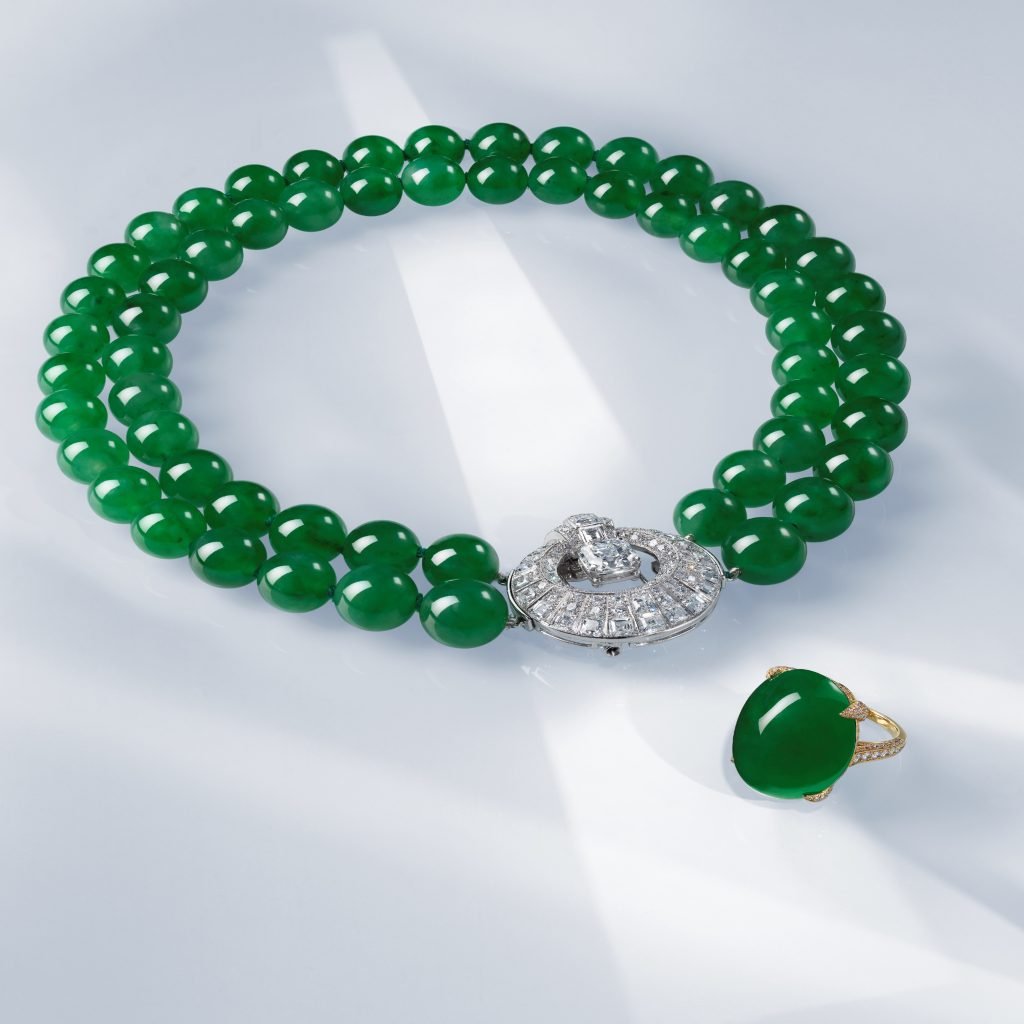
A two-strand jadeite necklace with a diamond/white gold Cartier clasp detachable and wearable as a brooch; and jadeite/diamond ring from Heidi Horten Collection. Courtesy: Christie’s
“The Heidi Horten sale highlighted the expectation that the market widen the lens through which we are examining the objects coming to auction,” Anthea Peers, a Christie’s executive, said at a restitution conference in London on June 20, “not only to research and document the ownership history of the works themselves, but also to examine the very source of the wealth used to purchase them even if they were bought in recent years, if that wealth was built during the Nazi-era.”
How the trade would live up to this expectation remains to be seen. How far back do you go? And who is off the list? It’s only a matter of time when Jeffrey Epstein’s art hits the auction block. Mick Flick, whose grandfather was convicted at Nuremberg, used to be one of the biggest contemporary art buyers of his era. “We used to let him bid at our auctions all the time,” the former auction executive said.
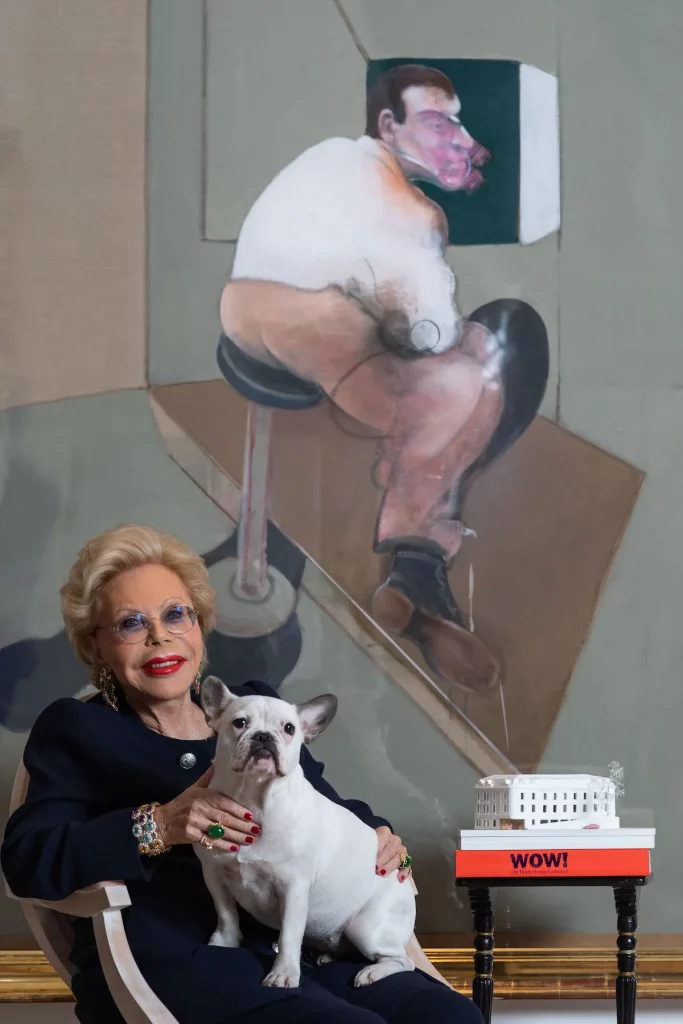
Heidi Goëss-Horten with a work by Francis Bacon in 2019. Photo by Ouriel Morgensztern, ©Heidi Horten Collection.
What’s clear is that the scrutiny is not going away. The Holocaust Survivors Foundation USA, outspoken since the outset of the controversy, said in a statement that the blowback “should send a clear message to all auction houses, museums, and private collectors that every collection, and every sale, will be scrutinized.”
The group, which put pressure on the Tel Aviv Museum of Art to cancel Christie’s restitution event, remains unequivocal in its criticism of the auction house for what it sees as whitewashing the jewelry’s Nazi history.
“The Horten-Christie’s playbook of rewriting history to deny the essential facts of the Holocaust, and even citing profiteers’ current ‘charitable purposes,’ has been used again and again by Holocaust profiteers to avoid the accountability that history and morality require,” David Schaecter, the foundation’s president, said in statement on July 2.
And while Schaecter commended the Tel Aviv Museum of Art for canceling the conference, at least one observer considers that gesture to be an empty one—because the museum itself has accepted a donation from German patrons whose wealth can be traced to the Nazi crimes against the Jewish people.
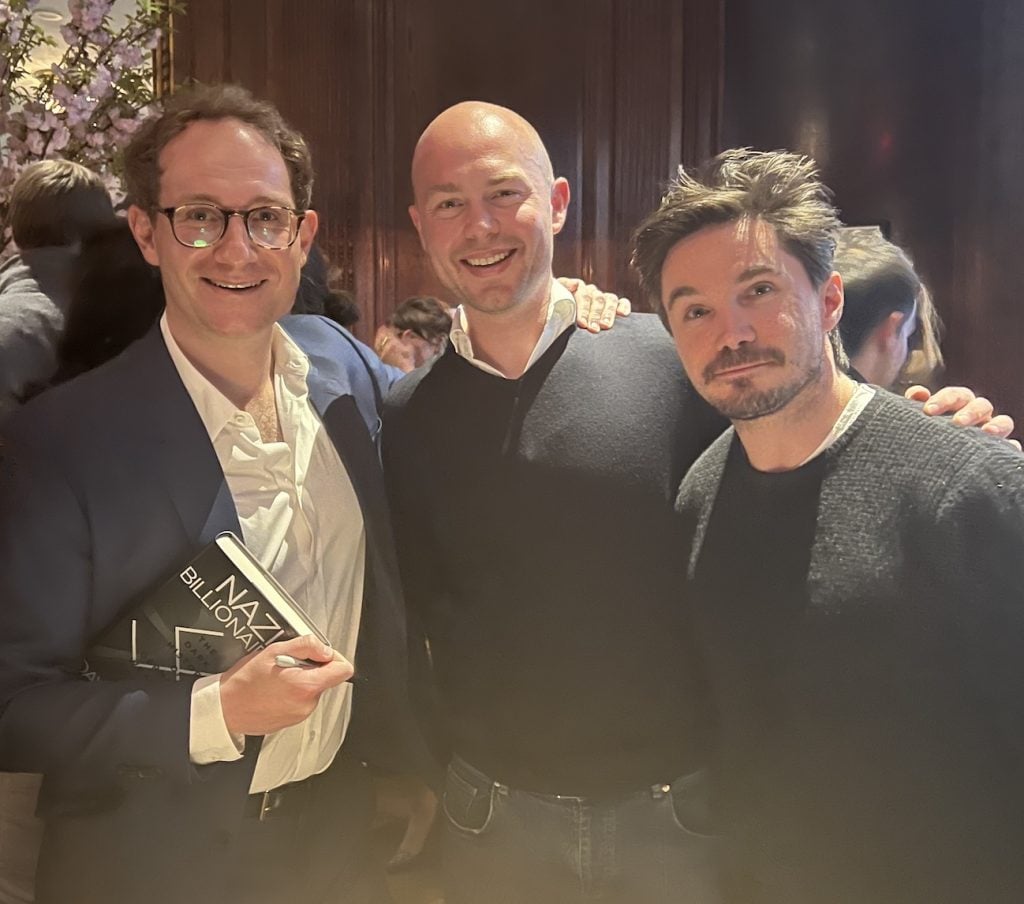
David De Jong, the author of “Nazi Billionaires,” left, at his book launch in New York, 2022, with collectors Freddy Insinger and Nicholas de Kwiatkowski. Photo: Katya Kazakina
In the epilogue to his book Nazi Billionaires, the journalist David De Jong describes visiting the Tel Aviv Museum of Art and noticing the name Ingrid Flick engraved in Hebrew on a wall. He couldn’t believe his eyes. Ingrid Flick was the third wife of Friedrich Karl Flick, whose father Friedrich Flick was “the mightiest and most ruthless of all German industrialists, who was convicted at Nuremberg and rose to become Germany’s wealthiest man in three different eras,” De Jong writes.
Ingrid Flick, who runs a foundation named after her late father-in-law, gave more than €500,000 to the museum, according to De Jong.
“She has never done any kind of reckoning with the Third Reich roots of her inherited fortune and her name is very prominently displayed in an Israeli museum,” De Jong told me by phone this week. “I find the hypocrisy of the Tel Aviv Museum of Art astounding. It’s not like the museum is removing her name from the lobby.”